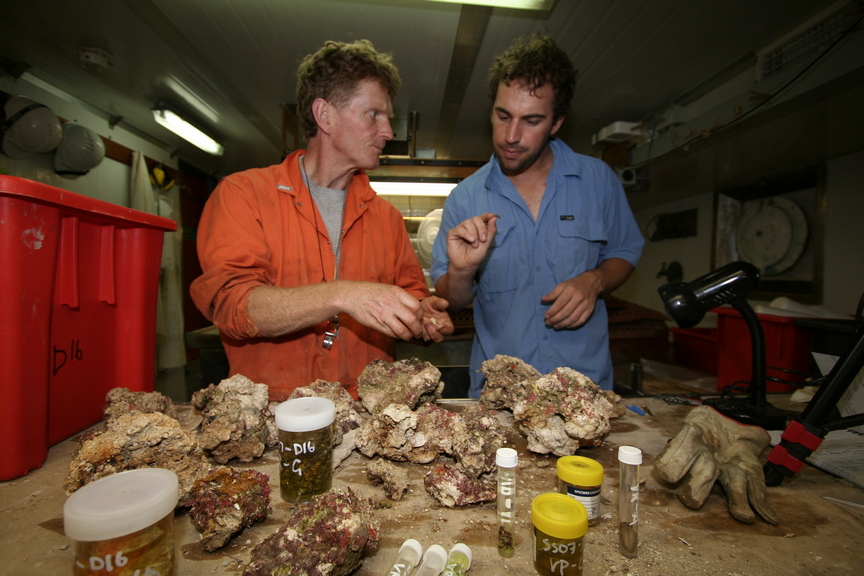THIS MEDIA RELEASE WAS DISTRIBUTED BY JAMES COOK UNIVERSITY ON WEDNESDAY 23 SEPTEMBER 2015.
Over the course of a year, one of Australia’s best non-fiction writers Michael Veitch, interviewed the men and women who worked onboard CSIRO’s Marine National Facility research vessel Southern Surveyor, to produce an engaging and sometimes dramatic account of their adventures.
For ten years, the Southern Surveyor represented the vanguard of Australian blue water marine science.
On over 100 voyages, this former North Sea fishing trawler with her distinctive blue and white livery carried scientists and technicians across the Southern, Pacific and Indian Oceans as well as the waters off northern Australia.
The book includes a chapter on Dr Robin Beaman from James Cook University, a marine geoscientist who discovered vast ancient drowned coral reefs not far from the Great Barrier Reef.
“My second voyage on board Southern Surveyor was the most significant of my career, which was absolutely amazing with one discovery after another,” Dr Beaman said.
“On board were geologists, robotics people, oceanographers, biologists and a really good geophysical team, and our objective was to map a 1500 km stretch between Cooktown and Mackay, and no sooner had we turned on the sea floor mapping sonar than it began giving some amazing results.”
“We discovered these drowned reefs were everywhere, including one almost continuous chain around 1000 km long. What we had found was really the proto barrier reef, the ancient forefather that was there before the rest of the Great Barrier Reef was created.”
“These were the once-thriving coral reefs which, with the rise of the sea level after the last ice age, gradually fell beyond the reach of sustainable light. Core samples have dated them from between 10,000 and 30,000 years ago.”
“We’re still reaping the benefits of it today. We’ve had millions of dollars of follow-up trips run since, many PhD students, dozens and dozens of papers and we’re still drawing on the data.”


